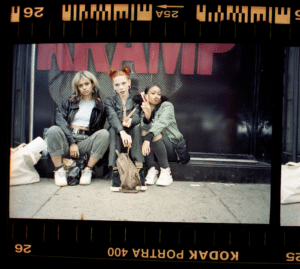Maximize Engagement with User-Generated Content: Tips for Creators
Engaging your audience effectively is crucial for the success of any marketing strategy. That’s what companies are paying you to do–because one of the most powerful ways engage with audiences is through user-generated content (UGC).
This blog post will provide you with actionable tips on maximizing engagement with UGC. By the end, you will learn how to encourage audiences to create content, curate and share it effectively, and measure its impact on your overall engagement metrics. This is a peek behind the curtain at what companies are probably trying to do with the UGC content you’re creating for them–namely, duplicate it, use it, and learn from it about effective ways to connect with their users.
If you keep these things in mind, you’ll be well on your way to creating amazing content that gets engagement for your clients!
Why User-Generated Content Matters

User-generated content is any form of content—text, videos, images, reviews, etc.—created by users rather than brands. When customers create content about a brand, they are essentially vouching for it. This kind of endorsement can be far more impactful than traditional advertising methods because people trust it more.
Moreover, UGC provides fresh and diverse content that can be shared across various platforms. It encourages community building and can significantly boost a brand’s visibility and credibility.
By leveraging UGC, brands can also gain insights into customer preferences and behaviors, helping them tailor their marketing strategies more effectively.
Encouraging Audiences to Create Content
The first step in maximizing engagement with user-generated content is encouraging audiences to create it. Here’s how brands usually approach getting free content from their customers:
- Create a Hashtag Campaign: A unique and catchy hashtag is a must for UGC campaigns. Brands then encourage their audience to use this hashtag when posting about products or services. For example, Coca-Cola’s #ShareACoke campaign successfully encouraged users to share their personalized Coke bottles on social media.
- Host Contests and Giveaways: Contests and giveaways are excellent ways to incentivize content creation. You’ll often see brands encouraging participants to create and share content for a chance to win prizes. The companies who ensure the rules are simple and the rewards are enticing often do best.
- Feature User Content: If brands want more UGC, they need to make it clear that they repost it sometimes. This recognition can motivate users to create high-quality content.
- Provide Clear Guidelines: Just like when working with UGC professionals, brands can increase their chances of getting the type of content they’re looking for if they offer clear instructions. This helps ensure the content aligns with brand values and messaging.
- Engage with the Audience: Responding to comments, liking posts, and sharing user-generated content are all ways that brands can make engagement a two-way street. Showing appreciation for peoples’ efforts can encourage more users to participate.
Curate and Share User-Generated Content Effectively

Once a brand has encouraged their audience to create content, the next step is curating and sharing it effectively. Here are some practical tips they tend to follow:
- Select High-Quality Content: Not all user-generated content will be suitable for sharing. Brands must choose high-quality content that aligns with their brand image and resonates with your target audience. (This, incidentally, is why brands often will hire professional UGC creators in the first place–so they can give clear brand direction and work with people who know how to create quality content)
- Create a Content Calendar: Next, they’ll plan when and where to share user-generated content. A well-organized content calendar ensures consistent posting and helps maintain audience engagement.
- Add Value: When brands share user-generated content, they’ll often add commentary or insights to provide additional value. This can make the shared content more engaging for their audience.
- Acknowledge Contributors: When sharing content, businesses must credit the original creators. It’s a best practice to tag them in posts and mention their usernames to show appreciation for their contributions.This is especially true if they’re sourcing the content from one of the contests or giveaways we mentioned earlier. Don’t worry, though–if, for some reason, you don’t want them to attribute the content to you, you can let them know.
- Use Multiple Platforms: Finally, it’s usually a great idea for companies to share user-generated content across various platforms such as Instagram, Facebook, Twitter, and their website. This broadens its reach and maximizes its impact.
Measure the Impact of User-Generated Content
The final step in maximizing engagement with user-generated content is measuring its impact. This helps brands understand what works and what doesn’t, allowing them to refine their strategy. This might be why they ask you to use a certain hook, or mention a certain product feature in your UGC–they’re experimenting, or they’ve figured out something that’s working and want to capitalize on it.
Of course, as a UGC creator, you won’t usually have access to your client’s metrics. But you can always ask and see if they’ll send you a report!
If you’re lucky enough to get your hands on metrics from your clients or find a post or ad with your content, here are the key metrics to track:
- Engagement Rate: Monitor likes, comments, shares, and other forms of engagement on user-generated posts. High engagement rates indicate that the content resonates well with an audience. You can probably monitor this one on your own if you see your video on their socials.
- Reach and Impressions: Track the number of people who have seen the user-generated content. Higher reach and impressions mean more visibility for the brand. This one you’ll need help from the brand to get.
- User Participation Rate: Measure the number of users participating in your UGC campaigns compared to the total number of followers or subscribers. You can calculate this one using the engagement rate divided by the total number of followers/subscribers.
- Conversion Rate: Assess how many users who engaged with UGC took a desired action, such as making a purchase or signing up for a newsletter. You’ll need help from the brand to know this one.
- Sentiment Analysis: Use sentiment analysis tools to gauge the overall tone of user-generated content related to your brand. Positive sentiment indicates good brand perception, while negative sentiment highlights areas for improvement. Again, you’ll need the brand’s help if you want this information.
User-Generated Content Best Practices

To ensure that your user-generated content is highly engaging and effective, it’s important to follow some best practices. These guidelines will help you create UGC that delivers long-term benefits:
- Be Authentic: Authenticity is key in UGC. Give genuine feedback and avoid overly scripted or staged content. Authentic user stories resonate more deeply with audiences.
- Create a Community: Foster a sense of community among your audience by engaging with them regularly and encouraging them to interact with each other. A strong community can drive continuous UGC engagement.
- Diversify Content Types: Create different types of content such as reviews, testimonials, unboxing videos, tutorials, etc. Diversifying your UGC portfolio keeps your feed interesting and engaging.
- Analyze Performance Regularly: Continuously analyze the performance of your UGC using the various metrics mentioned earlier, as often as you can. Regular analysis helps you understand trends and make data-driven decisions about how to improve your content.
The Role of Influencers in User-Generated Content
Influencers play a significant role in amplifying user-generated content efforts. Brands partnering with influencers can reach a wider audience quickly while adding credibility to their campaigns. Here’s how that usually happens on the brand side of an influencer collaboration:
- Select Relevant Influencers: Brands start by choosing influencers whose audience aligns with their target demographic. Relevance is more important than follower count, although not all brands agree.
- Create Collaborative Campaigns: They then work closely with influencers to co-create UGC campaigns, encouraging the influencer’s followers to generate content about the brand. Collaborative efforts often yield better results than one-off promotions.
- Mention Influencer Participation: Brands can also highlight influencer involvement in their campaigns by tagging them in posts or featuring them prominently on their website or social media channels.
- Nurture Relationships: Building long-term relationships with influencers is a better deal for brands than short-term engagements. Long-term partnerships result in more authentic promotions that resonate ]with audiences.
- Evaluate Impact Regularly: Evaluating the impact of influencer collaborations using metrics such as engagement rates, conversion rates, reach, impressions, etc, helps brands determine ROI from influencer partnerships and decide which influencers they want to work with in the future.
User-Generated Content Tools & Platforms
Curating UGC from across multiple platforms can be a pain. If you’re working with a brand to start a UGC campaign and it’s getting out of control, here are the tools and platforms we recommend they add to their toolset:
- Social Media Management Tools: Tools like Hootsuite, Buffer, and Sprout Social can help schedule posts across multiple social media platforms efficiently. These tools often come with built-in analytics features to track performance.
- UGC Platforms: Dedicated platforms like Yotpo, TINT, and Olapic specialize in collecting, curating, and displaying UGC on websites and social media channels, seamlessly integrating them with existing workflows.
- Analytics Tools: Google Analytics, social media insights, and native analytics offer valuable data needed to measure the impact of UGC campaigns and optimize future strategies.
- Sentiment Analysis Tools: Tools such as Brandwatch, Awario, and Sprinklr provide sentiment analysis capabilities allowing brands to gauge the overall tone and mood surrounding brand-related conversations.
- Collaboration Tools: Platforms like Slack, Trello, and Asana facilitate collaboration between team members, ensuring smooth execution throughout the campaign lifecycle
User-Generated Content Case Studies

Before we end, there’s nothing more helpful than real-world examples to illustrate how effective UGC campaigns look. Here are three case studies that highlight just that:
Case Study: Coca-Cola’s “Share a Coke” Campaign
One notable example is Coca-Cola’s “Share a Coke” campaign, launched in 2011. It started in Australia and expanded globally. For the campaign, they replaced the iconic Coca-Cola logo with names popular among their target demographic. Bottles and cans featuring names encouraged consumers to find, purchase, and share personalized drinks. The resulting wave of social media posts using #ShareACoke drove massive engagement and significantly increased sales.
Case Study: GoPro’s Awards Program
GoPro is known for leveraging UGC consistently through its Awards Program, encouraging users to submit photos and videos captured using their cameras. Winners are featured on the company’s official channels and receive monetary prizes. The program not only generates high-quality UGC, it’s quite engaging and showcases their product’s capabilities in real-world scenarios.
Case Study: Starbucks #WhiteCupContest
Starbucks ran a contest called the “#WhiteCupContest” and asked customers to draw designs on plain white cups and then submit their entries via social media. Winning designs were turned into limited-edition reusable cups available nationwide. The contest generated thousands of submissions, significantly boosting brand visibility and fostering creativity among Starbucks’ community members.
Conclusion
Maximizing engagement through user-generated content involves strategic planning and execution. Ultimately, a well-executed strategy enhances engagement, strengthens loyalty, and drives long-term growth.
So, now that you know what it takes brands to run successful UGC campaigns, what changes are you thinking of making to your content? We’d love to hear, just leave your thoughts in the comments! 🙌










